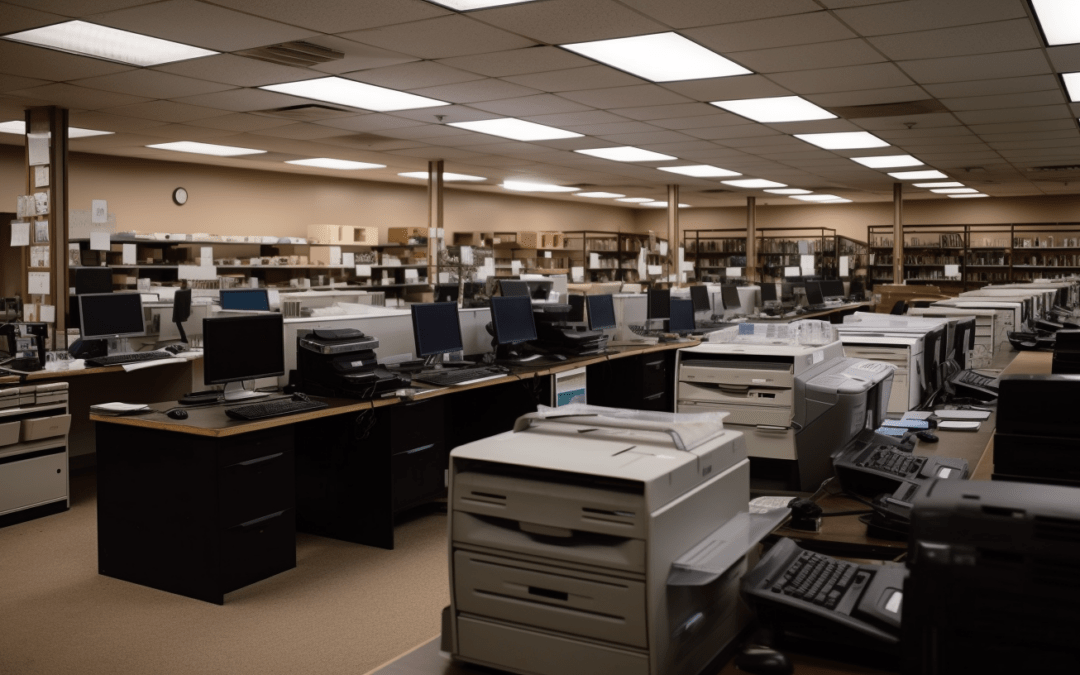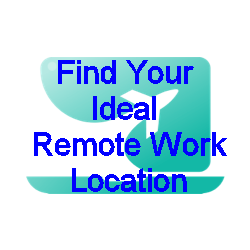The Return To Office (RTO) mandates are full of comforting friendly phrases like “we do our best work when we are together” or “ensuring full use of our assets”. Unfortunately, neither of these things are true. Most of our best work is when we have undisturbed focus time. If we ensure full use of our assets wouldn’t we sell or sublease things we aren’t using, rather than force people to use them just because we have them? We need to step back and focus on our needs rather than base them on some bygone era of what office culture used to be.
Shopping for What We Need
We tend to look at our business needs through the lens of what we have or what we think we are supposed to have. We idolize people like Bill Gates and Jeff Bezos who started their businesses in garages and closets. But we forget they didn’t start with an office. They grew into an office based on business needs and the technology limits of the day. If they had started their businesses in 2025, they might have grown differently. Companies today are faced with similar decisions. New companies have the advantage of seeing how businesses have run for the last several years without full-time office space. Existing companies may be struggling with processes that never really adapted to remote or hybrid work, or they see their office space gathering dust and they don’t want to downsize. Whether you are in the market for a shiny new office, or not sure what to do with the one you have, let’s take a step back at our shopping list.
Collaboration & Teamwork
This is a leadership favorite. Remember all those good times around the water cooler – just before a manager told you to get back to your desk? Physical spaces do encourage face-to-face communication, brainstorming, and group problem-solving. But if you are intentional, all of these things can happen at a coworking location, a conference or a retreat, or entirely virtually.
Video conferencing platforms like Zoom, Microsoft Teams, and Google Meet allow for virtual face-to-face meetings. Most of us live on video calls most days. And chances are if you are in a physical office, this is still your primary means of interaction. Why would you go to an office just to sit on Zoom calls?
Maybe you need access to collaboration tools and a whiteboard. How many of you have taken a photo of a whiteboard and then transferred it into Visio or some other tools? What if you did it digitally first? Chances are you are going use collaboration tools like Slack or Teams (instant messaging), Trello, Asana (task management), and Google Drive or SharePoint (document collaboration) to enable teamwork in real-time wherever you are located. Back to those wonderful whiteboards, tools like Miro and MURAL support brainstorming sessions, just like a physical whiteboard in an office – and you only have to draw it once.
Beyond automation, scheduled check-ins are important in any organization. It’s about intentional interaction more than physical proximity. Which would you rather do, meet your boss at your/their desk or a coffee shop? It’s a rhetorical question. It’s the contact that is important, both for individuals and especially for teams. Regular points of contact keep teams aligned and connected. In-person is always preferred, but who says it has to be done in an office?
Structured Work Environment
Having structure, either in an office or remote, helps employees stay focused and maintain productivity. Assuming everyone are adults and don’t need to be watched for 8 hours to make sure they are doing their work, then a structure isn’t necessarily tied to a physical place. What works best for you?
Maybe you like the predictability and the customizability of a home office. This is great for employees who want to create dedicated workspaces at home, separate from their personal life. We’ve all seen a toddler run into the room or a cat photobomb a Zoom meeting. Not ideal, but they can be the best part of a meeting. (Hint – have less meetings)
If you need structure but like diversity, maybe a coworking space is what you need. For many the local coffee shop does just the trick. Many opt for traditional coworking spaces. These provide an office-like setting with desks, meeting rooms, and amenities. Or if you need something that provides a specific mood, view, or other amenities, Radious has lots to choose from.
The structure isn’t just about location. Tools and techniques can help provide structure regardless of where you are located. Use a Pomodoro timer to stay focused. Or make sure you have scheduled breaks to avoid burnout. Policies can also help with structure. Setting clear expectations for work hours and deliverables creates structure. And remember, the best policies work anywhere, not just in the office.
Access to Resources
What are the resources that you can’t live without? Chances are you don’t have a particle accelerator or a CNC cutting machine at home. Offices generally provide essential tools, equipment, and facilities like printers, meeting rooms, and high-speed internet. But wait, I have most of those things at home, and I’m online all the time. Where is the file room anyway?
Chances are your company files aren’t in a file room unless you are in the government or a law office. Even that is becoming less likely. Storage is expensive, and there are usually retention requirements/limits for tax and FOI purposes. Almost all of it is digital these days. Google Drive, Dropbox, and OneDrive provide easy access to company files.
I don’t know about you, but I rarely print anything anymore. Those large electronic devices that constantly have paper jams are getting used less and less. In the last 10 years, I think I’ve spent more time at a copier loading it, fixing paper jams, and putting in access codes than I did getting copies.
Just because you need access to printing, high-speed internet, meeting rooms, and phone booths doesn’t mean those have to be provided in an office. Most of us are good with what we have at home. But if you need more printing, faster internet, etc. Co-working spaces are readily available with a variety of configurations. Maybe your company just reimburses you for what you need. It’s most likely cheaper than the $11,000-17,000 per person annual cost of a full-time desk.
But what about support? Even in the office, when was the last time an IT person came to your desk? Chances are your IT helpdesk isn’t even in the same country as you if you are a large company. Companies provide remote IT assistance and secure access to company networks for all their locations. So why is remote a problem?
Professional Image
Image is important to most organizations. The Zoom mullet isn’t going to cut it all the time. Many companies need a credible and professional space for meetings with clients and partners. This can work against you as well. How many people want to see a lavish government office for unemployment or housing assistance? It can send the wrong message. The key is finding that happy spot that meets the needs and sends the right message.
Maybe you just need to send the right message only at certain times. Virtual flexible offices can provide you with the space you need on a predictable basis without the full-time cost. Services like Opus Virtual Offices and Regus provide a business address, phone answering, and mail handling. If variety is an option, coworking spaces offer ultimate flexibility for meetings of various sizes. This can be for your team or client interactions.
Sometimes you don’t need to meet clients face to face, you just need to look professional on camera. It’s always great to have a well-designed home office. If that’s not an option, a consistent professional virtual background is just what the doctor orders. Still, it never hurts to have good lighting, professional backgrounds, and a quality webcam to improve video calls.
Company Culture & Identity
So many leaders equate company culture and identity with a physical location that they ignore the research that shows that’s not the case. Culture and identity are built through personal connections and meaningful interactions, not just within the wall of a particular building. It’s the interactions that strengthen team spirit, corporate values, and a shared sense of purpose. Not the location where they take place. Most meaningful interactions don’t take place in an office setting, they take place elsewhere.
These can include company retreats or offsites to build culture. Activities like this are much more meaningful and interactive than casual contacts in an office setting. They can happen as a whole company if it is small enough, or just for specific teams or departments based on logistics. Maybe you want a Tuscan villa for a week. Or maybe you need to charter a cruise ship so you can have access to a 1000-person auditorium. There are lots of possibilities.
You can build culture online with activities as well. Online escape rooms, trivia games, and virtual happy hours strengthen bonds. You can also build Slack channels for hobbies, well-being, and socializing to help create a sense of belonging. And don’t forget to still recognize the good work people are doing regardless of where they are. Employee spotlights and virtual awards boost engagement.
Networking & Social Interaction
Networking within the office tends to be limited, and unless you are single and under 30, most social interactions outside of the office can range from challenging to awkward. If you have children under 16, chances are after work activities are going to be limited. That ends up with young single people and old divorced people frequenting the usual after-work destinations. Conceptually these are important for relationship-building and reducing feelings of isolation. The options that include everyone have declined in recent years. And almost all of them are outside the office.
Industry forums and online communities are where much networking happens. Platforms like LinkedIn, Reddit, and Discord offer networking opportunities. In addition to live events, many online events are available as well. Meetups and similar local groups can be great for networking.
For companies that use coworking spaces, many host networking events and workshops. It’s generally outside your specific industry, but it’s always good to meet new people and find out about what else is happening in the world.
Security & Confidentiality
There is anecdotal evidence that more security incidents happen in the office rather than outside the office. The logic is that workers assume more controls are in place in an office setting and are therefore less vigilant. – Ensures better control over sensitive documents and data security. Some jobs have specific security requirements either for corporate IP or national security reasons. There’s a pretty strong case for doing those tasks in the designated areas. But beyond that, office vs remote generally have similar security profiles. The important thing is having good security policies that cover everyone everywhere. Clear guidelines on data handling and security practices help mitigate risks.
Virtual Private Networks are the norm for most remote computer access. The security is comparable to being in an office setting. Most apps are starting to require multi-factor authentication which provides extra security layers to prevent unauthorized access. Depending on your security needs, many coworking spaces have dedicated, secure workspaces.
Work-Life Separation
In theory, offices help employees maintain boundaries between work and personal life. That usually goes out the window the first time you are home at night and your boss texts you for something to be done first thing in the morning. Most of us are connected 24/7 whether we are in the office or not. It no longer provides the separation that it once did. As commute distances and times have gone up, the work-life separation lines have gotten blurred. In some cases, people are commuting half the time they are working.
Work-life separation requires more of a conscious effort when not in the office. I’ve heard of people getting in their car and driving around the block just to provide a physical break before they start work in their home office. It sounds a little silly, but it does help establish that segregation. A dedicated workspace is always a good practice if you have the option. Having a separate home office helps establish boundaries. This works great for empty nesters, but younger professionals in smaller spaces may not have that luxury. Coworking space can be just the ticket to provide a physical work environment outside the home.
Beyond the physical separation, time is where most separation needs to take place. Time blocking and scheduling are a must. Tools like Google Calendar help manage work and personal life. Clear working hours are also important even if people are working asynchronously. Companies can also implement policies that discourage after-hours work, but this rarely happens.
Supervision & Management
Our romanticized version of the office allows for better oversight, mentoring, and immediate feedback. This is generally a myth but leaders wish it was true. How many times have you waited for someone to be available to look at something or answer a question, and it just doesn’t happen? And when was the last time you had a mentor? It’s not common to start with, and it’s not more common in an office setting. Offices often become a crutch for managers who don’t know how to manage. They afford informal networks that fill in the gaps in poor management. Butts in seats, badge swipes, and daily stand-ups have nothing to do with outcomes within an organization.
A good manager can manage from anywhere. Weekly one-on-ones and team meetings keep employees on track regardless of geography. Tools and project management software such as Asana, Monday.com, and ClickUp provide visibility into project status and encourage a focus on outcomes rather than activities. Also, regular feedback from peers and managers ensures accountability. Again, this can happen anywhere.
Employee Well-being
Leaders may make a lot of statements about focusing on employee well-being in the office, but few things compete with not having a commute. Offering a stable and ergonomic workspace can improve comfort and health, but it’s not a real selling point. My desk is a mess but my chair is comfortable and I don’t need to worry about anyone switching it.
If you can do it in an office, you can do it at home if you have the space. Adjustable chairs, standing desks, and proper lighting improve health in any setting. Companies can offer virtual fitness classes, mental health resources, and meditation apps just like in the office. For those who opt for a coworking space, many offer wellness amenities such as gyms, quiet zones, and relaxation areas.
The most important aspect of well-being is flexibility. Allowing employees to work at their most productive times reduces stress. Flexibility also includes location.
Final Thoughts
While a physical office meets these needs in a centralized way, remote work, and coworking spaces provide flexibility and alternative solutions. The question is whether you can do something without an office or not. The key is to combine digital tools, remote-friendly policies, and occasional in-person meetups to create an effective work environment that encompasses one or many different locations.
If you are thinking about what you need in an office, or in place of an office, here’s a checklist we put together to make your shopping experience smoother.



